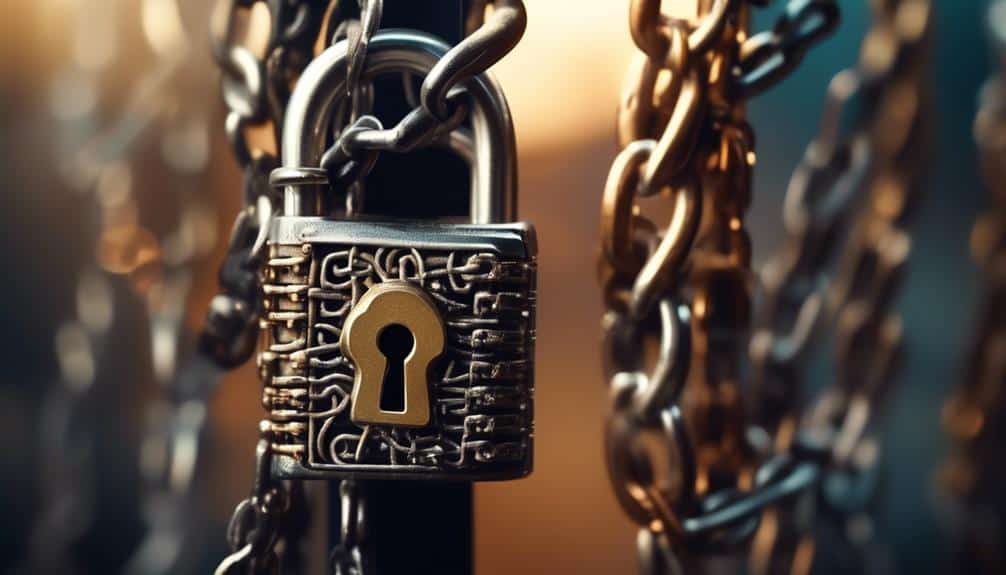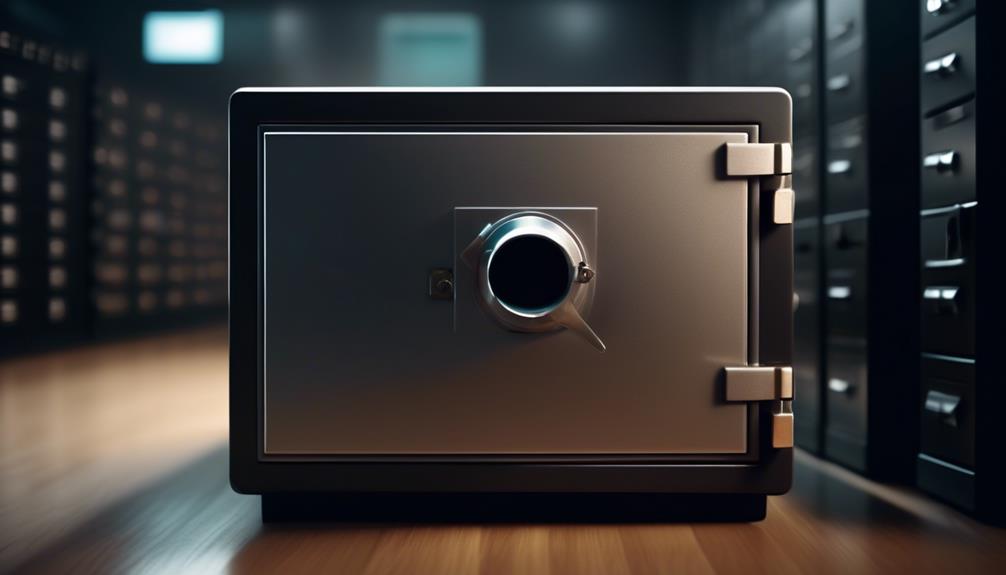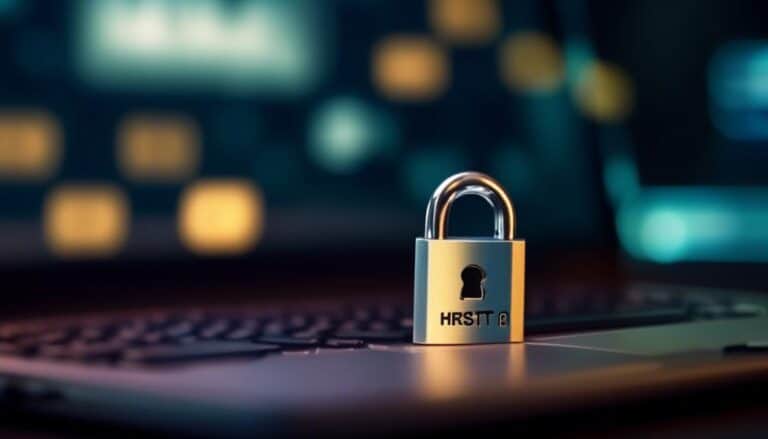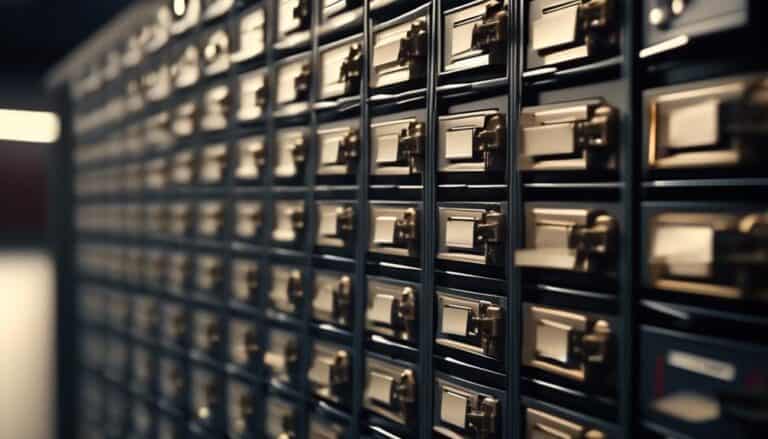Avoid Data Breaches: Best Practices for Managing and Sharing Files Securely
Are you tired of constantly worrying about the security of your files? In today's digital age, data breaches have become a prevalent concern for individuals and organizations alike. With cyber threats evolving and becoming more sophisticated, it has never been more important to adopt best practices for managing and sharing files securely.
By implementing strong password policies, utilizing encryption for file storage, training employees on data security protocols, regularly updating and patching software, using secure file-sharing platforms, and conducting regular security audits, you can significantly reduce the risk of a data breach.
But how exactly do these practices work, and why are they crucial for safeguarding your sensitive information? Let's explore further.
Key Takeaways
- Implement strong password complexity and regular updates to enhance password security and authentication.
- Utilize multi-factor authentication (MFA) to add an extra layer of protection for accessing files and data.
- Employ encryption methods such as symmetric and asymmetric encryption, as well as hash and hybrid encryption, to secure file storage.
- Provide comprehensive employee training on data security, including educating them on risks and consequences, promoting strong password practices, and encouraging the recognition and reporting of suspicious activities.
Implement Strong Password Policies

To enhance the security of your files, it's essential to implement strong password policies. Password complexity plays a crucial role in preventing unauthorized access to your sensitive information. When creating passwords, ensure that they're long, consisting of a combination of uppercase and lowercase letters, numbers, and special characters. Avoid using easily guessable information such as your name, birthdate, or common words. It's also advisable to regularly update your passwords to minimize the risk of them being compromised.
In addition to password complexity, implementing multi-factor authentication (MFA) adds an extra layer of security to your files. MFA requires users to provide two or more forms of identification to access their accounts, typically a password and a unique code sent to a registered device. This ensures that even if your password is stolen, the attacker would still need to have physical possession of your device to gain access. MFA significantly reduces the risk of unauthorized access and should be implemented wherever possible.
Utilize Encryption for File Storage
Consider encrypting your files for secure storage. File encryption provides numerous benefits, such as protecting your sensitive data from unauthorized access and ensuring its confidentiality. Encryption methods employ complex algorithms to convert your files into unreadable ciphertext, making them virtually inaccessible to anyone without the encryption key.
To better understand the advantages of file encryption, consider the following table:
| Benefits of File Encryption | Encryption Methods |
|---|---|
| Protects sensitive data | Symmetric Encryption |
| Ensures data confidentiality | Asymmetric Encryption |
| Prevents unauthorized access | Hash Encryption |
| Safeguards against data breaches | Hybrid Encryption |
Train Employees on Data Security Protocols

Train your employees on data security protocols to ensure they're equipped with the necessary knowledge and skills to protect sensitive information. By providing comprehensive training, you can empower your employees to play an active role in preventing data breaches and safeguarding your organization's valuable assets.
Here are three key areas to focus on when training your employees on data security protocols:
- Understanding the importance of data protection: Educate your employees about the potential risks and consequences of data breaches. Highlight the impact it can have on the organization's reputation, customer trust, and financial stability. Emphasize the responsibility they hold in protecting sensitive data.
- Implementing strong password practices: Teach your employees the importance of using strong, unique passwords and implementing two-factor authentication where possible. Encourage them to regularly change their passwords and to avoid using personal information or common phrases.
- Recognizing and reporting suspicious activities: Train your employees to identify common signs of phishing attempts, social engineering, and other malicious activities. Teach them how to report any suspicious emails, phone calls, or messages to the appropriate authorities within the organization.
Regularly Update and Patch Software
To ensure the security of your files, it's crucial to regularly update and patch your software.
Software security measures are implemented through updates to address vulnerabilities and enhance protection against potential threats.
Software Security Measures
Regularly updating and patching your software is vital for maintaining a secure file management system. By keeping your software up to date, you can protect your files from potential threats. Here are three important reasons why you should prioritize software updates:
- Addressing software vulnerabilities: Regular updates help patch any known vulnerabilities in your software. These vulnerabilities can be exploited by hackers to gain unauthorized access to your files and compromise your network security.
- Enhancing system performance: Software updates often include performance improvements and bug fixes. By keeping your software updated, you can ensure that your file management system runs smoothly and efficiently, providing a better user experience.
- Staying ahead of emerging threats: Cyber threats are constantly evolving. Regular software updates help you stay ahead of these threats by implementing the latest security measures, protecting your files and ensuring the integrity of your network.
Importance of Updates
Keeping your software updated is essential for maintaining a secure file management system and protecting your files from potential threats. Regular updates and patches ensure that any vulnerabilities in the software are addressed, reducing the risk of data breaches and unauthorized access to your files. Additionally, updating your software provides you with the latest features and improvements, enhancing your overall file management experience.
To emphasize the importance of updates, consider the following benefits:
| Importance of Updates |
|---|
| 1. Enhanced Security |
| Regular updates and patches help to fix security vulnerabilities, making it harder for hackers to exploit your system. |
| 2. Improved Performance |
| Updates often include performance optimizations, resulting in faster and more efficient file management processes. |
| 3. Access to New Features |
| Software updates frequently introduce new features and functionalities that can enhance your file management capabilities. |
In addition to regular updates, it is also crucial to implement other security measures, such as regular backups to ensure data recovery in case of a breach, and multi-factor authentication to add an extra layer of protection to your file management system. By staying proactive and keeping your software up to date, you can maintain a secure file management system and safeguard your valuable files.
Patching Vulnerabilities
Ensure the security of your file management system by regularly updating and patching your software to address any vulnerabilities and protect against potential threats. Here are three important reasons why you should prioritize patching vulnerabilities:
- Stay ahead of hackers:
Software vulnerabilities provide opportunities for hackers to exploit weaknesses in your system. By applying security patches, you can close these gaps and prevent unauthorized access to your files.
- Protect sensitive data:
Breaches caused by software vulnerabilities can result in the exposure of sensitive information, such as customer data or trade secrets. Regularly updating and patching your software helps safeguard this valuable data and maintains the trust of your clients.
- Ensure system stability:
Vulnerabilities in software can lead to system crashes and performance issues. By patching vulnerabilities, you can improve the stability and reliability of your file management system, enabling smooth operations and uninterrupted productivity.
Use Secure File-Sharing Platforms
To ensure the security of your files, it's crucial to use secure file-sharing platforms.
These platforms provide encryption for file security, protecting your sensitive information from unauthorized access.
Additionally, they offer access control measures, allowing you to grant specific permissions to individuals or groups.
Encryption for File Security
Consider utilizing secure file-sharing platforms that employ encryption for enhanced file security. Encryption is a crucial aspect of file security, as it protects your data from unauthorized access and ensures that only authorized individuals can view and modify the files. By using secure file-sharing platforms that offer encryption, you can ensure that your files are protected throughout their lifecycle.
Here are three reasons why encryption is important for file security:
- Confidentiality: Encryption ensures that only authorized individuals can access the files, keeping sensitive information confidential and protecting it from unauthorized disclosure.
- Integrity: Encryption helps maintain the integrity of the files by detecting any unauthorized changes or modifications. It ensures that the files remain unchanged and unaltered during transmission and storage.
- Compliance: Encryption is often required by industry regulations and data protection laws. By using secure file-sharing platforms with encryption, you can ensure compliance with these regulations and avoid potential legal issues.
Access Control Measures
Secure file-sharing platforms are essential for implementing access control measures and ensuring the protection of your files. Access control systems play a crucial role in safeguarding sensitive information by granting or denying user permissions based on predefined rules.
By using a secure file-sharing platform, you can create user accounts and assign specific permissions to individuals or groups. This allows you to control who can view, edit, or delete files, minimizing the risk of unauthorized access.
Additionally, these platforms often offer features such as password protection, two-factor authentication, and activity logs, further strengthening access control measures.
Regularly reviewing and updating user permissions is also important to ensure that only authorized individuals have access to your files.
Secure File Transfer
Using a secure file-sharing platform is essential for ensuring the safe transfer of files. To achieve secure file transfer, you need to follow certain protocols and best practices. Here are three key considerations:
- Encryption: Use secure file transfer protocols, such as SFTP or HTTPS, to encrypt your files during transfer. This ensures that your data remains confidential and protected from unauthorized access.
- Access Controls: Implement strong access controls on your file-sharing platform to restrict file access to authorized individuals only. This includes using strong passwords, multi-factor authentication, and role-based access controls.
- Regular Audits: Conduct regular audits of your file-sharing platform to detect any vulnerabilities or unauthorized access attempts. This helps you identify and address security gaps proactively, ensuring the ongoing safety of your file transfer processes.
Conduct Regular Security Audits
Regular security audits are essential for ensuring the ongoing protection and integrity of your files. Conducting regular security assessments is a proactive measure that can help prevent data breaches and safeguard your sensitive information. By regularly evaluating your security protocols and systems, you can identify vulnerabilities and address them before they can be exploited by cybercriminals.
During a security audit, you should examine various aspects of your file management and sharing processes. This includes assessing the strength of your passwords, reviewing user access controls, and evaluating the effectiveness of your encryption methods. It's also important to review your network infrastructure, firewalls, and antivirus software to ensure they're up to date and functioning properly.
Additionally, you should consider conducting external penetration testing to simulate real-world attacks and identify any weak points in your system. This can help you understand your organization's security posture and uncover any potential vulnerabilities before they can be exploited.
Regular security audits should be an integral part of your data breach prevention strategy. By staying proactive and regularly reviewing your security measures, you can minimize the risk of a breach and protect your files and sensitive information from unauthorized access.
Frequently Asked Questions
What Are Some Common Signs or Indicators That a Data Breach Has Occurred?
If you notice unauthorized access to sensitive information, unusual network activity, or unexpected changes in system settings, it could indicate a data breach. Respond promptly with data breach prevention protocols to mitigate further damage.
How Can I Ensure That My Employees Are Consistently Following Data Security Protocols?
To ensure your employees consistently follow data security protocols, incorporate regular data security training sessions. This will help them understand the importance of compliance and equip them with the necessary skills to protect sensitive information.
What Are the Potential Consequences of Not Regularly Updating and Patching Software?
Neglecting regular software updates may lead to potential consequences such as vulnerability to cyber attacks, data breaches, and loss of sensitive information. Stay proactive by ensuring timely updates to protect your systems.
To securely share files with external parties not using secure file-sharing platforms, use secure file transfer methods like password-protected zip files or encrypted USB drives. Alternatively, send secure email attachments using encryption software or secure file-sharing services.
What Are Some Best Practices for Conducting a Security Audit to Identify Potential Vulnerabilities?
To conduct a security audit, start by understanding its benefits. Then, follow these steps: identify potential vulnerabilities, assess current security measures, analyze data access controls, review incident response plans, and implement necessary improvements.
Conclusion
To effectively manage and share files securely, it's essential to implement strong password policies. Utilize encryption for file storage. Train employees on data security protocols. Regularly update and patch software. Use secure file-sharing platforms. Conduct regular security audits.
By following these best practices, you can proactively protect your data from potential breaches and ensure the confidentiality and integrity of your files.
Stay vigilant and proactive in safeguarding your valuable information.








